|
BULB LOG 14 --- 4th April 2007
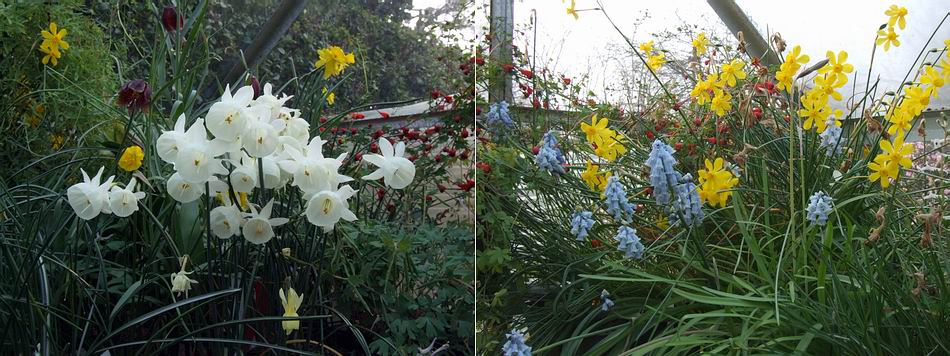
Bulb house flowers
The bulb house continues to look like an over grown meadow with the flower stems growing ever longer to reach above the leaves. While this does not make for good show bench plants I like the effect that I am seeing with the jumble of flowers of all different forms and colours creating a truly international meadow. The dominant Narcissus on the left is my own cross made to imitate the wild hybrid between N. triandrus and cantabricus - N. x susannae.
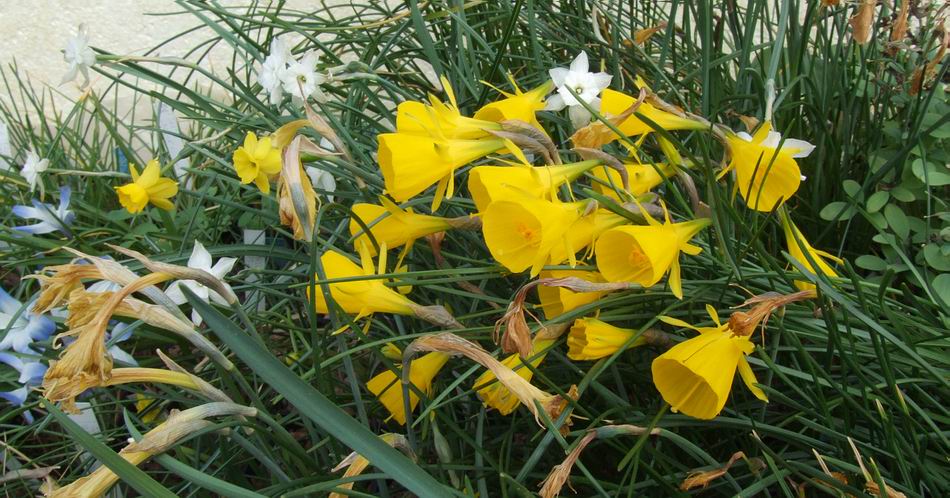
Narcissus bulbicodium
In another section Narcissus bulbicodium plays the lead role with N watierii peeking out from the leaves behind and Tecophilaea to the left. To help ensure a good flowering for next year it is now time to think about giving my bulbs a feed of potassium (kalium).
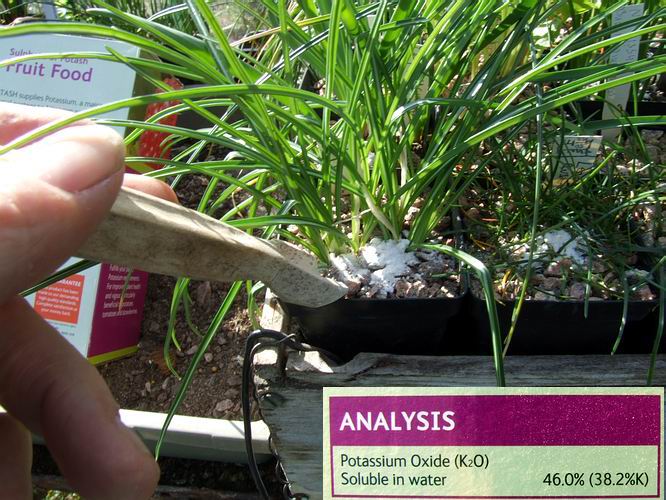
Potassium feed
Potassium or kalium as many of you will know it, is the K in the NPK formula which appears on every fertiliser container and it is the most essential nutrient to build up bulbs to help them produce flowering buds for next year. As soon as a bulb has finished flowering it will start to store nutrients in the bulb, form next years flower as a perfect miniature as well as producing seeds if it has been successfully fertilised. This is a lot to ask a bulb especially when it is growing with many others in a relatively small pot so I like to give them as much help as I can by providing them with potassium.
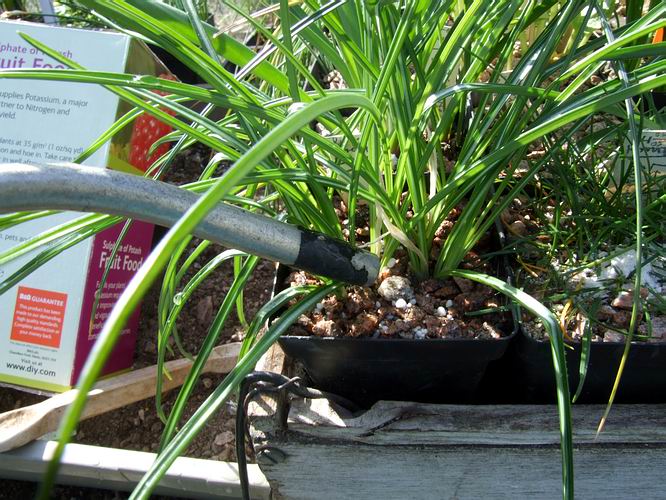
Water in feed
After sprinkling a small amount of the white powdered form of potassium which is available in the UK, onto each pot, I immediately water it in. Most of the powder is taken down into the compost while a few of the larger particles stay on the gravel; these will gradually disappear with each subsequent watering. I have to be much more aware of when I apply the potassium feed now that I am growing in plastic pots because they dry out much more slowly than the clay pots did and so require far less frequent watering. I would probably have to water clay pots three times more often than plastic ones and especially at this stage when most of the major growth of stems and leaves has taken place and the bulb just needs to replace the moisture it transpires.
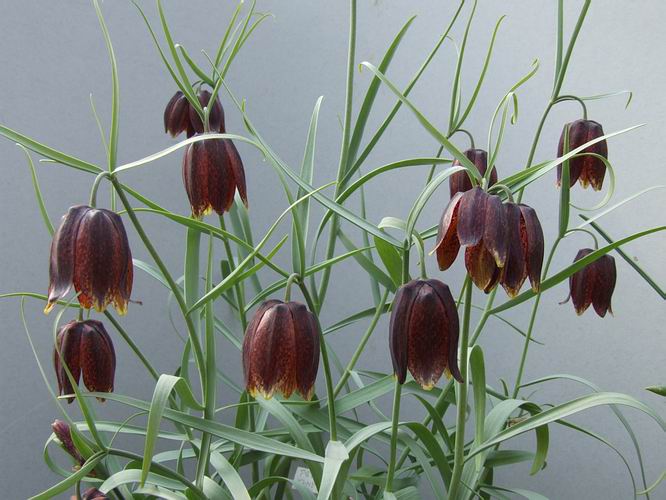
Fritillaria tenella
Fritillaria tenella is part of what I refer to as the montanum complex. I have many very similar fritillaries with an assortment of names; all have brown flowers on tall stems and are difficult to tell apart. Many are synonymous with F. montanum.
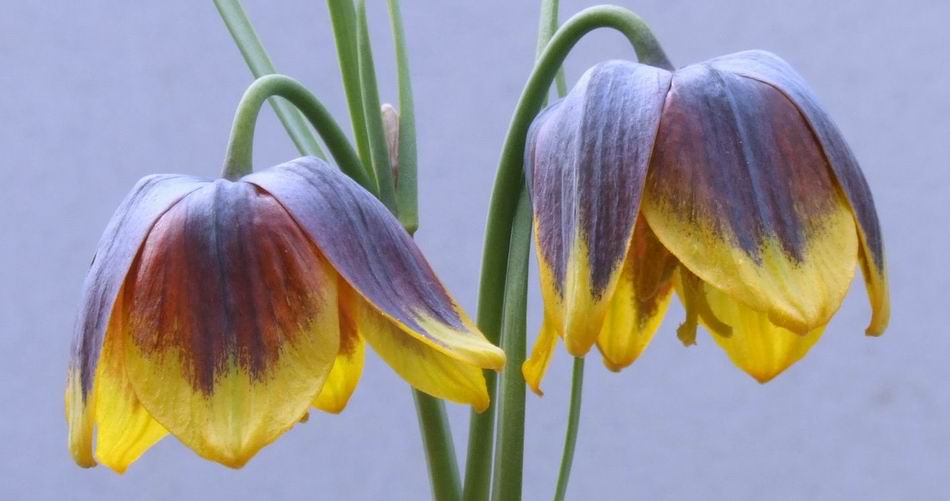
Fritillaria reuteri
Fritillaria reuteri shares a similar colour combination with F.michailovskyi but I think it is nicer as it has wider open flowers - is not as common in the trade and not often offered as a bulb, so seed is the best way to get hold of this species.
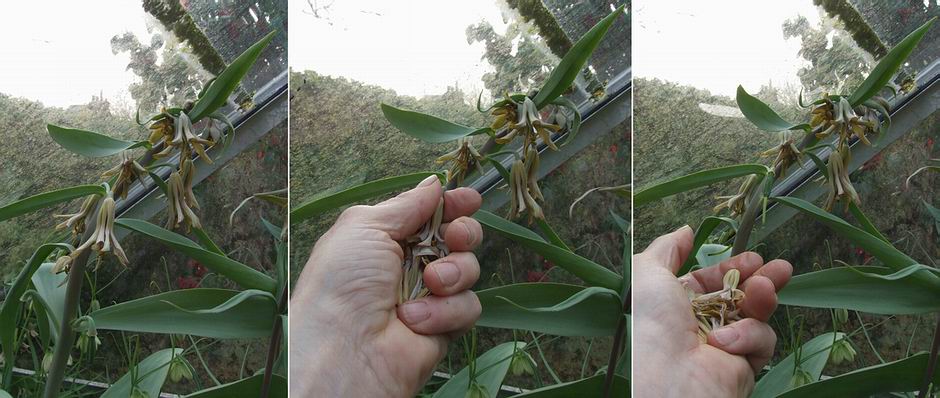
Removing dead flowers
It is essential to keep a regular watch on your bulbs as the flowers are going over and to remove the dying petals so that they do not attract botrytis, which they will if the weather turns cold and damp. Here I am carefully removing the petals from a superb large flowered form of F. sewerzowii I received from Janis Ruksans. A daily visit ensures that I catch them just at the stage when they are about to drop, they then come away in my hand and leave the seed pod undamaged to swell, providing it has been fertilised. If I let them fall they get caught up in the broad leaves of this species; they are then much more difficult to collect and any I miss will get botrytis which can then easily pass from the dead petals to the living tissues of the leaves.
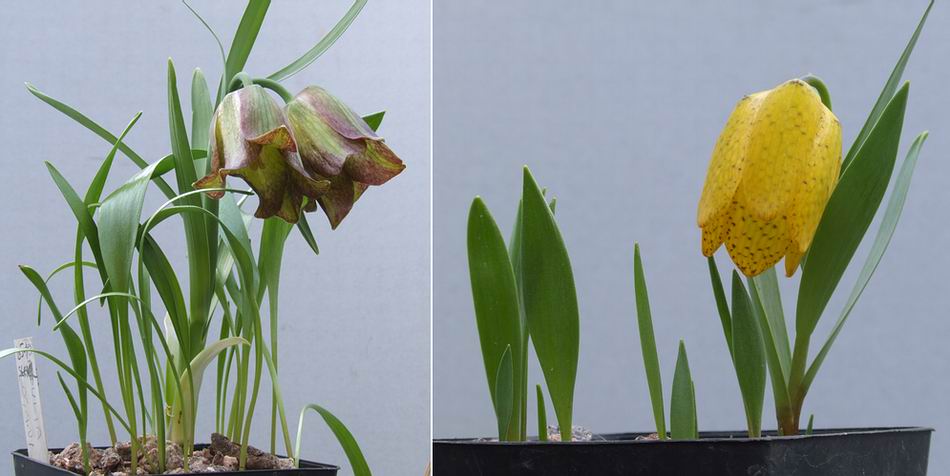
Fritillaria olivieri and aurea
A few seed pots flowering for the first time include Fritillaria olivieri and aurea both species I already have but I always want to raise more new plants form seed. One thing that we do learn as we grow bulbs is that we are never infallible. Just when we think we have cracked the cultivation process and the bulbs are growing really well, they bring you back down to earth with a crash as a potful of what appeared to be happy bulbs just disappear to nothing in one season. I have changed nothing in my growing regime so why they die is a mystery, maybe they just have a finite life time. That is the reason I always like to have reserves coming along from seed to replace my failures.
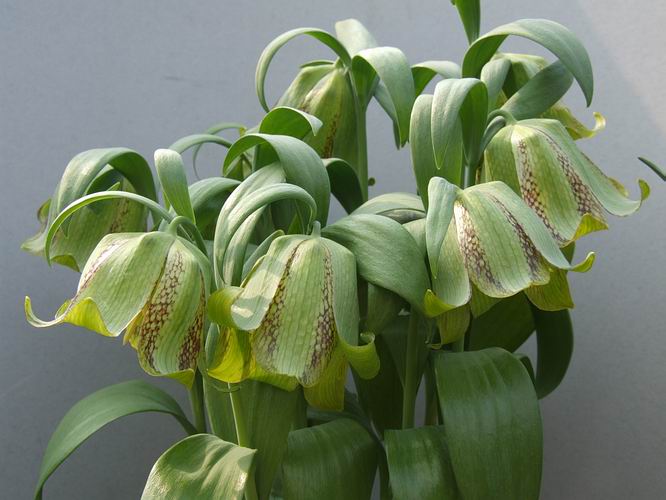
Fritillaria kotschyana 'Craigton Max'
Another pleasure gained from raising bulbs from seed is when you see the variation within a species - not only in looks but in vigour. Fritillaria kotschyana 'Craigton Max' is a form I selected out even before it had produced its first flower as it was by far the most vigorous seedling bulb in the pot, producing offsets freely. Now it is a huge thrill to see so many pots of Fritillaria 'Craigton Max' adorning the Show benches and giving pleasure to many a grower and visitor, last year it got an Award of Merit from the Joint Rock Committee.
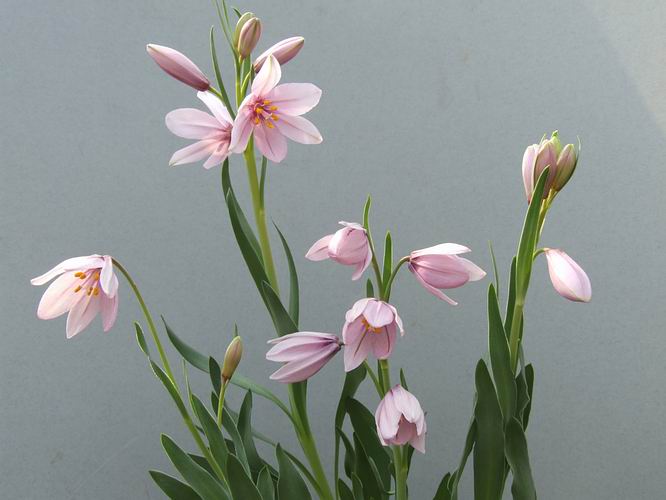
Fritillaria pluriflora
Yet another plant I would never have had if I had not raised it from seed is the very beautiful Fritillaria pluriflora.
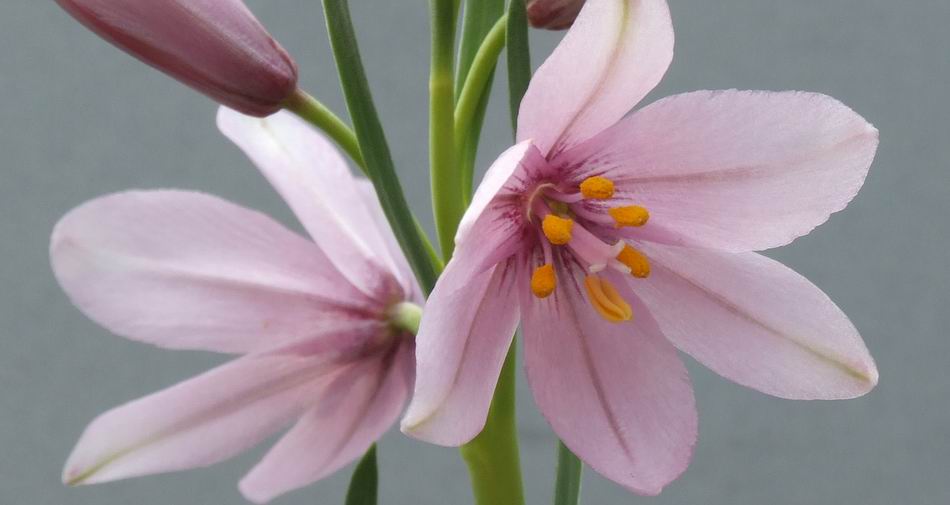
Fritillaria pluriflora flower
It is when you look at this plant that you can see just how close to a Lily frits can become and how thin, grey and shaky the line that separates them out is!
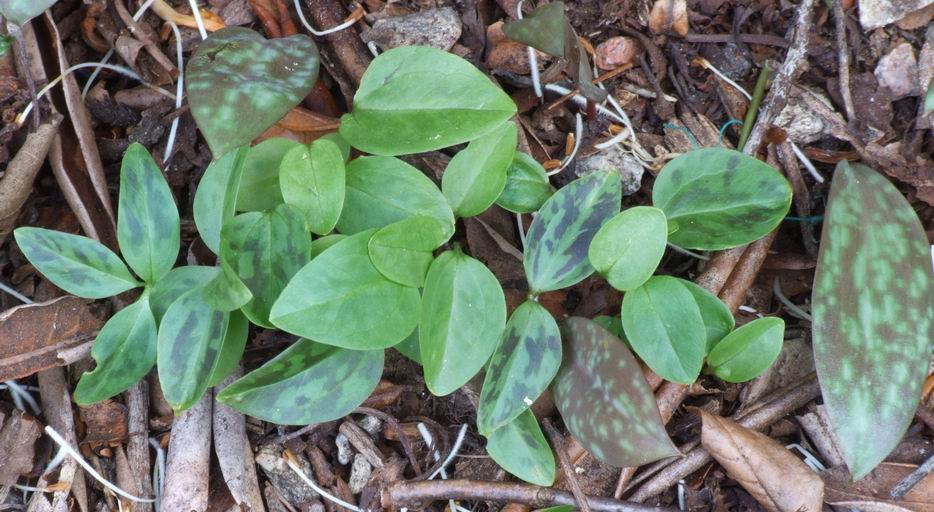
Trillium seedlings
Still on the subject of seedlings this is a group of self sown seedlings at the edge of a gravel path where seed escaped before I could collect it a few years ago. Notice how some of them are now starting to show some patterning on their leaves and also notice how the leaves with the pattern on do not stand out so obviously from the background as the plain green ones do. Part of the reason for the pattern is surely to camouflage the leaves from grazing animals; it does not work with slugs that could home in on seedlings blindfolded! After a minute you will probably have noticed the Erythronium americanum leaves around the trillium seedlings, as this if one of the stoloniferous forms that form great mats of leaves all of which have a similar strategy of camouflage.
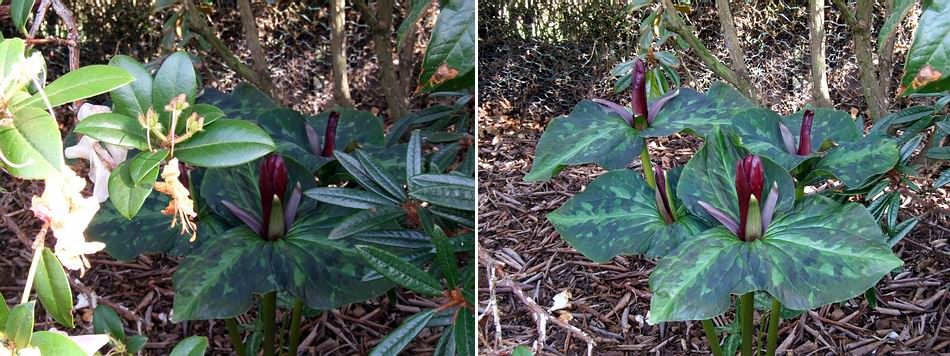
Trillium chloropetalum
The parent plant, a robust form of Trillium chloropetalum grows partially hidden tucked under some rhododendrons which we need to part to view the plant properly. A well stocked densely planted garden never reveals everything too easily; the viewer has to search out some of the treasures.
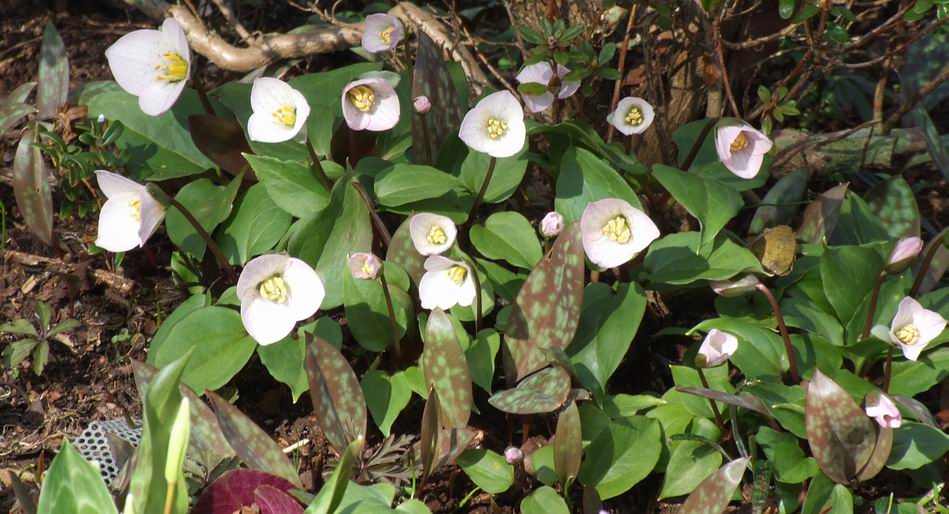
Trillium rivale
Growing under a dwarf rhododendron, this time in our high rise and time share style of garden, is the small but perfect Trillium rivale. We are never satisfied with one plant in a spot when we can have several growing at different levels as well as at different times of the year.
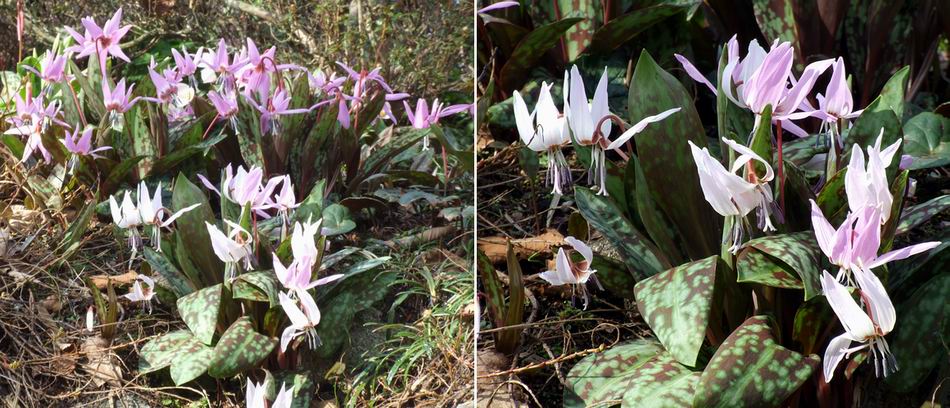
Erythronium dens canis
Just to let you know that the erythroniums are coming out, I will end this week with two clumps of Erythronium dens canis. The darker form to the rear has built up clonally and the group in the foreground, detail on the right, is a group of self sown seedlings from that group. It shows the variation from near white to dark pink that we can get from Erythronium dens canis.
^ back to the top ^
|

